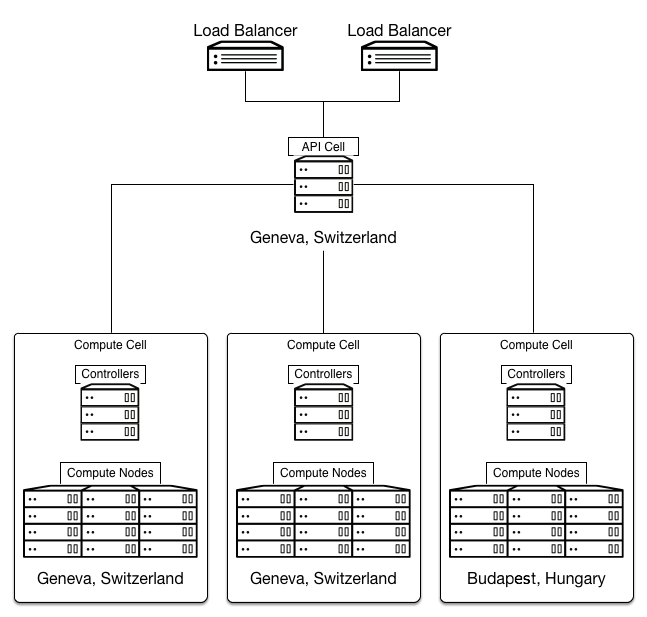- Moved RST guide to the arch-design folder - Deleted XML files - Updated scripts Change-Id: Id0e38a9cada9dd75cb9c8f3bd2d88ce2f4fd3eac Implements: blueprint archguide-mitaka-rst
5.3 KiB
Prescriptive examples
The Conseil Européen pour la Recherche Nucléaire (CERN), also known as the European Organization for Nuclear Research, provides particle accelerators and other infrastructure for high-energy physics research.
As of 2011 CERN operated these two compute centers in Europe with plans to add a third.
| Data center | Approximate capacity |
|---|---|
| Geneva, Switzerland |
|
| Budapest, Hungary |
|
To support a growing number of compute-heavy users of experiments related to the Large Hadron Collider (LHC), CERN ultimately elected to deploy an OpenStack cloud using Scientific Linux and RDO. This effort aimed to simplify the management of the center's compute resources with a view to doubling compute capacity through the addition of a data center in 2013 while maintaining the same levels of compute staff.
The CERN solution uses cells <cell> for segregation of compute
resources and for transparently scaling between different data centers.
This decision meant trading off support for security groups and live
migration. In addition, they must manually replicate some details, like
flavors, across cells. In spite of these drawbacks cells provide the
required scale while exposing a single public API endpoint to users.
CERN created a compute cell for each of the two original data centers and created a third when it added a new data center in 2013. Each cell contains three availability zones to further segregate compute resources and at least three RabbitMQ message brokers configured for clustering with mirrored queues for high availability.
The API cell, which resides behind a HAProxy load balancer, is in the data center in Switzerland and directs API calls to compute cells using a customized variation of the cell scheduler. The customizations allow certain workloads to route to a specific data center or all data centers, with cell RAM availability determining cell selection in the latter case.

There is also some customization of the filter scheduler that handles placement within the cells:
- ImagePropertiesFilter
-
Provides special handling depending on the guest operating system in use (Linux-based or Windows-based).
- ProjectsToAggregateFilter
-
Provides special handling depending on which project the instance is associated with.
- default_schedule_zones
-
Allows the selection of multiple default availability zones, rather than a single default.
A central database team manages the MySQL database server in each cell in an active/passive configuration with a NetApp storage back end. Backups run every 6 hours.
Network architecture
To integrate with existing networking infrastructure, CERN made customizations to legacy networking (nova-network). This was in the form of a driver to integrate with CERN's existing database for tracking MAC and IP address assignments.
The driver facilitates selection of a MAC address and IP for new instances based on the compute node where the scheduler places the instance.
The driver considers the compute node where the scheduler placed an instance and selects a MAC address and IP from the pre-registered list associated with that node in the database. The database updates to reflect the address assignment to that instance.
Storage architecture
CERN deploys the OpenStack Image service in the API cell and configures it to expose version 1 (V1) of the API. This also requires the image registry. The storage back end in use is a 3 PB Ceph cluster.
CERN maintains a small set of Scientific Linux 5 and 6 images onto which orchestration tools can place applications. Puppet manages instance configuration and customization.
Monitoring
CERN does not require direct billing, but uses the Telemetry service to perform metering for the purposes of adjusting project quotas. CERN uses a sharded, replicated, MongoDB back-end. To spread API load, CERN deploys instances of the nova-api service within the child cells for Telemetry to query against. This also requires the configuration of supporting services such as keystone, glance-api, and glance-registry in the child cells.

Additional monitoring tools in use include Flume, Elastic Search, Kibana, and the CERN developed Lemon project.